July 22, 2017
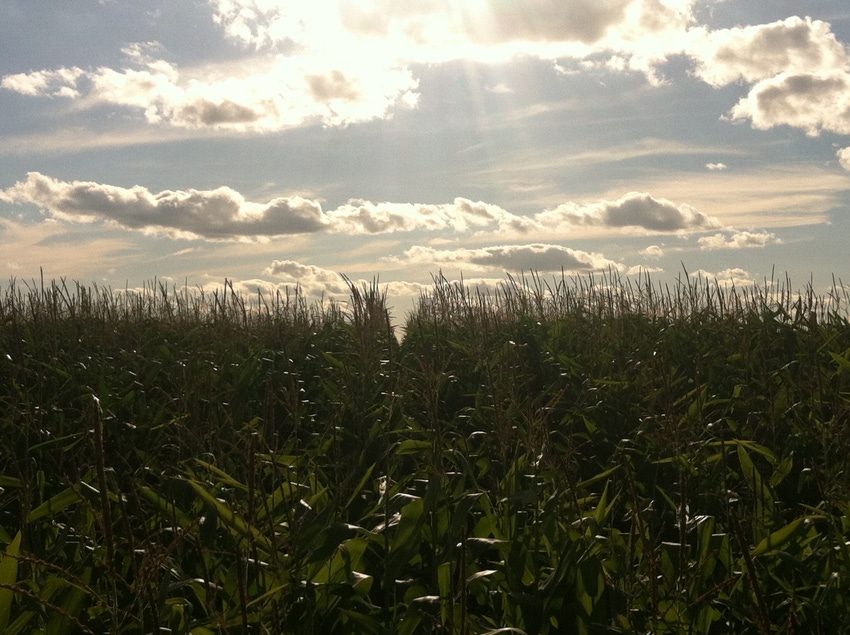
In this third installation, Winfield United agronomists offer details on crop maturity variability, pollination concerns, weed management, insect and disease concerns, hot and dry conditions, and much more.
Current scouting is driving fungicide and insecticide recommendations in some states, and continued scouting is advised. Some tissue testing has helped make in-season changes to fertility prior to grain fill. And the agronomists offer a look into dicamba use, plus planning for fall burndown.
Read on to learn advice from agronomists in Illinois, Indiana, Iowa, Michigan, Minnesota, Ohio, South Dakota and Wisconsin.
Illinois – reported July 19
Based on the Spring planting season in Illinois, there is a wide variety of yield potential going into grain fill, says Sara Smelser, agronomist with WinField United. On average, cornfields are ranging from VT to R3 and soybean fields are predominantly R1 to R3. A lack of rain, combined with high temperatures, is affecting pollination across most of the state.
Due to a mild winter, insect populations in Illinois are booming. Some of the main finds are Japanese beetles, stink bugs, grape colaspis and grasshoppers. On the disease front, common rust and southern rust are beginning to show up, as well as gray leaf spot. The early fusarium-infected plants are starting to die. Whether a farmer is experiencing disease pressure or not, Smelser says using a fungicide containing a strobilurin can extend plant health through grain fill, ultimately protecting yield.
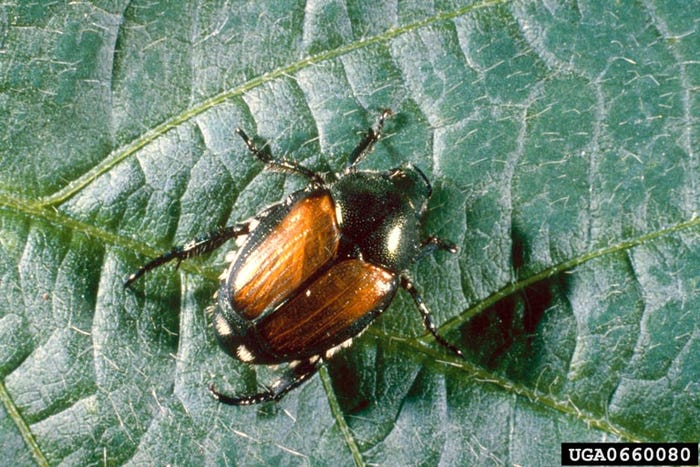
For those with disease, she recommends using a fungicide with a triazole or succinate dehydrogenase inhibitor (SDHI) to help stop the spread of disease and protect from future infection. Smelser reminds farmers that the recommended fungicide application timing on corn is R1 to R2 and for soybeans, R3.
Smelter’s take home message is that before abandoning the crop until harvest, farmers should remember that biomass accumulation at VT is less than half of the total biomass accumulation for the season. This is why fungicide is recommended at this point in the growing season. If one can extend the life of the plant during grain fill, then a greater yield potential is realized.
Indiana - reported July 19
Indiana is seeing a lot of varied crop growth, says Glenn Longabaugh, WinField United agronomist. Due to delayed planting, replanting and re-replanting, corn throughout the state is anywhere from a vegetative state to R3-4 (milk-dough). However, Longabaugh says there’s a stronghold of good corn in parts of central and southern Indiana. Soybeans also appear to run the gamut, with growth stages ranging from R1 to R3.
There’s a lot of talk in Indiana about southern rust as well as gray leaf spot, eyespot, northern corn leaf blight, common rust and some anthracnose. Longabaugh is reminding farmers that healthy corn at VT will become a better host through reproduction and therefore, become much more susceptible to disease. If a farmer has a good crop and adequate soil moisture, applying a fungicide should be a no-brainer, he says.
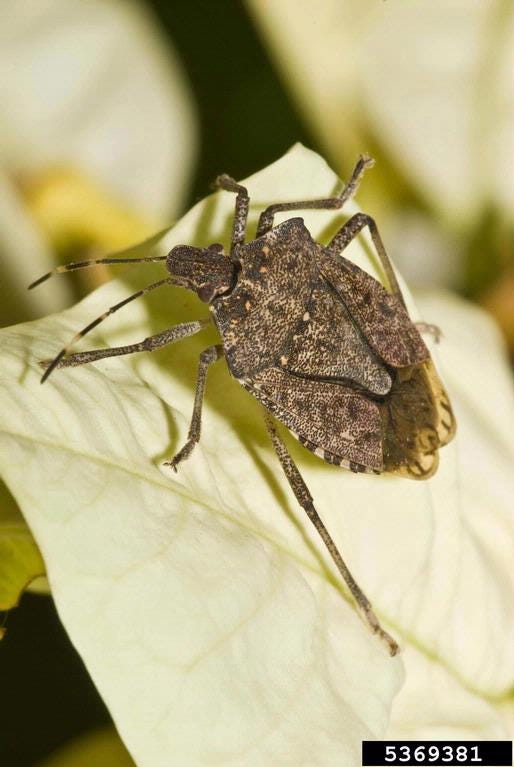
Susan Ellis, bugwood.org
In terms of soybean pests, he’s spotting Japanese beetles, bean leaf beetles, grasshoppers, green cloverworm and, perhaps most damaging, stinkbugs. Grape colaspis adult beetles are also emerging and can cause damage in subsequent corn crops. In addition to fungicides, now is a great time to make an insecticide application.
The new dicamba products were used in soybeans this year to control herbicide resistant weeds like marestail and tall waterhemp, says Longabaugh. Dicamba usage in corn also went up threefold in his area. At this point in the season, he’s discouraging dicamba applications as many soybean fields are past the R1 growth stage. Always follow label instructions exactly and consult your local agronomist when working with these products.
Iowa - reported July 18
Although much of Iowa started off wet early in the season, dry conditions have been the norm across much of the state in June and July. Ryan Wolf, agronomy manager for WinField United in Iowa, says as corn enters reproductive stages, many areas are in need of moisture. Crops in light, sandy soils are showing signs of stress. Across the state, on average, corn is starting to tassel and soybeans are at the R2 growth stage.
Wolf says considering the environmental conditions, crops are looking good in most areas. The latest USDA report indicates that 71 percent of corn and 63 percent of soybean crops are in good or excellent condition in the state. Western Iowa seems to be suffering most from lack of moisture, with crop conditions deteriorating daily without rainfall. Storms have caused localized hail damage in pockets across the state, which is evident by tattered leaves in some fields, with some areas completely wiped out.
Farmers are beginning to evaluate the effectiveness of their weed management programs, and Wolf says he’s seeing good weed control this year. Weather permitted timely herbicide applications, and preemergence herbicides are helping keep fields clean to canopy closure. He says there was limited use of new dicamba herbicides in his area this year, but he has seen effective weed control where it was used. A dicamba spray volume of 15 to 20 gallons per acre has shown better weed control compared to fields sprayed with the label minimum of 10 gallons per acre.
Tissue sampling has been helping Wolf determine nutrient levels in both corn and soybeans to allow time for in-season changes to fertility plans prior to grain fill. He’s also been using the R7 Field Forecasting Tool from WinField United to monitor nitrogen, potassium and moisture stress in fields.
Although conditions have been dry, it’s no time to be complacent with scouting. Wolf recommends frequent field observations, because spider mites, grasshoppers and soybean aphids could still be a problem as the season progresses. He advises farmers to continue scouting fields to assess pest pressure and evaluate the need for treatment.
Michigan - reported July 17
Currently, soybean growth stages vary from R1 to R3, with corn plants between V8 and VT depending on their location in the state, says Ken Shemka, certified crop adviser with WinField United.
Many fields were planted late or were replanted due to heavy rains. The Thumb and Saginaw Valley regions of Michigan were hit pretty hard, receiving as much as 4 to 9 inches of rain in some areas. This caused flooding and submerged crops in many fields, Shemka notes. Surprisingly, the water drained off the fields fairly rapidly and crops recovered well. A stabilized nitrogen program definitely paid off in this situation.
Although the eastern side of the Thumb of Michigan has received ample rain this year, the western part of the Thumb is very dry — so dry that farmers have to use a drill and auger to get soil samples to measure nitrate levels. Drought stress will be showing up soon if they don’t get some rain.
Shemka says that seedcorn maggot was an issue in soybeans early in the season. This pest thinned out some stands, but overall stands look good in most areas. He recommends a high-quality seed treatment to help fight off seedling insects and diseases at planting time.
Shemka recommends making sure any diseases you see are properly identified before applying products. Walk your fields weekly to see if anything unusual is popping up, and contact your local agronomist or crop consultant for help with a recommendation to resolve any issues.
Wet weather has prohibited farmers from getting into the field to control weeds in a timely manner, says Shemka, so weed management is a huge concern on some farms. To add to farmers’ frustration, some new and unusual weeds have appeared on farms because flooding has moved weed seeds from miles away.
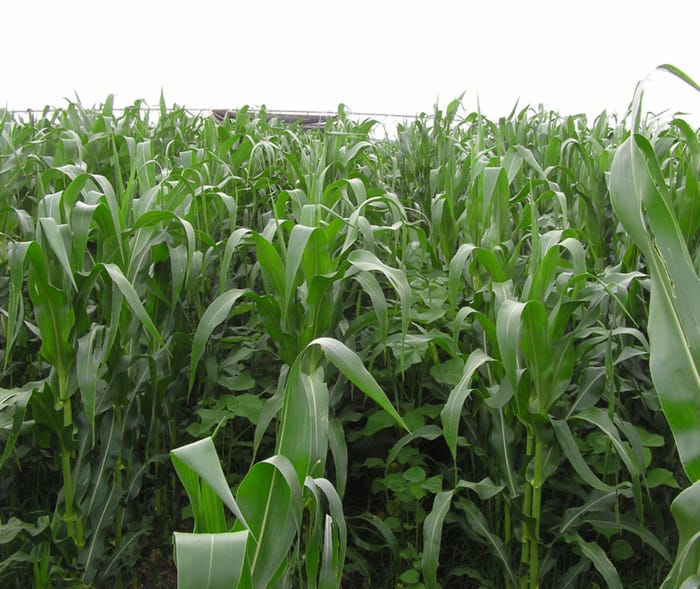
<p>Evaluation of early-season weed control by Jane Moriles-Miller, graduate student, and Sharon Clay, plant scientist, SDSU, identified an irreversible gene response taking place in newly emerging corn and the weeds they emerged into. The more time that passed before weed removal, the greater the yield loss. </p>
There are some dicamba-tolerant soybeans planted in Shemka’s immediate area, but only a small percentage of farmers are trying them, he says. Shemka reminds farmers to consult their agronomist for best management practices before using any new dicamba products.
Minnesota - reported July 15
Most Minnesota cornfields are in the mass flow period right before tassel, says Matt Mesenbrink, WinField United master agronomy advisor. A few fields have begun to tassel, and many will begin tasseling soon as long as temperatures remain warm.
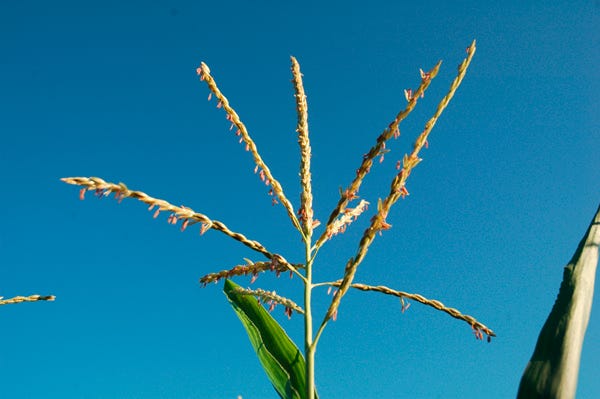
Anthracnose has been present in a few stressed cornfields that were planted right before Mother’s Day weekend during a cold snap. Most fields seem to be handling the added stress fine. Mesenbrink recommends talking with a local agronomist about whether a fungicide application would be a good investment.
Soybeans are in full flower and have put on leaf surface area and shaded the row for the most part, Mesenbrink reports. Crops are looking good after some cooler weather earlier this summer. Spotty storms have hit some areas, causing hail and wind damage. Lighter ground is showing drought stress with limited rain in some areas.
Soybean aphids continue to show up in low numbers on several fields and, with little rain in the forecast, farmers are preparing for possible spider mites, Mesenbrink notes.
Dicamba-tolerant soybeans have been used on roughly 10 percent of the acreage in Mesenbrink’s area of west-central Minnesota. Both farmers and applicators have had lots of questions about tank mixes, best management practices and the like, he says. Everyone has taken this technology seriously, which has been critical to ensuring the responsible use of these products.
A number of farmers Mesenbrink works with use ag tech tools to monitor rainfall, keep an eye on field growth and get a good handle on trouble spots. Scouting is made easier when troublesome areas in a field can be identified using in-season imagery, for example, versus walking the entire field to gain an understanding of what is occurring.
Farmers should continue to look for ways to gain ROI potential, says Mesenbrink. For example, fungicides on both corn and soybeans may coincide with an insecticide application or a micronutrient application. In addition, tissue sampling continues to demonstrate value, with farmers pushing yields to try to remain profitable on their acres.
Ohio - reported July 18
Currently, Ohio farm fields have considerable amounts of standing water, says Joe Rickard, WinField United agronomist. The state has experienced multiple rain events where inches of rain have been received, not tenths of an inch. For both farmers and retailers, lack of sunshine and heavy rains have been the biggest challenges this season.
However, corn is looking fairly good, with growth stages ranging from V10 to VT, depending on planting date. Soybeans, on the other hand, have been affected by a number of diseases and insects, which are stressing these crops even more. Soybean growth stages range from V6 to R3.
Japanese beetles have started to come on strong in both corn and soybeans, Rickard notes. Diseases he’s observed include common rust in cornfields, and gray leaf spot and frog eye leaf spot in soybean fields. Insecticide and fungicide applications are ways to combat these pests, but fields are too wet to get into them and do anything, he adds.
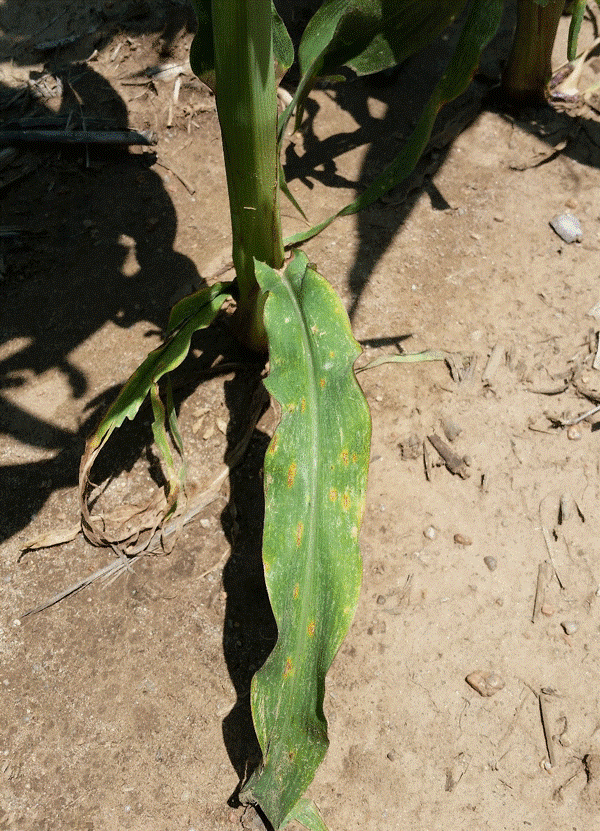
Even though it’s only July, Rickard recommends that farmers have a plan for fall burndown and know what products they want to use to accomplish it. It’s important to get ahead of problems and keep them in check so they don’t become even more serious next year, he says.
Rickard has had some farmers and retailers use the new dicamba-tolerant soybeans this year. He recommends that farmers talk with their agronomists about best practices prior to using any new dicamba products.
South Dakota - reported July 18
Dry conditions continue to prevail in South Dakota after a hot, dry June. Rainfall amounts through July are still quite a bit below average, prompting a statewide drought emergency. WinField United agronomy manager Ryan Wolf says the lack of moisture is stressing crops and will likely result in lower yield potential in the west and central parts of South Dakota. Corn in the area is starting to tassel and soybeans are at the R2 growth stage, although dry conditions have limited growth. At this point, farmers are mainly concerned about rows not closing and weed control as the season progresses.
According to the latest USDA reports, a majority of the corn and soybeans in the state are in fair to very poor condition. Only 30 percent of corn and 29 percent of soybean crops are listed in good or excellent condition. The lack of moisture has limited herbicide efficacy, and it’s not uncommon to see glyphosate-resistant kochia, marestail and giant ragweed escaping treatment. Farmers are using more rescue applications to try to clean up fields this year. Wolf says he has seen good weed control with new dicamba products in fields where the appropriate spray volumes were used to control dense weeds.
Dry conditions have likely contributed to rootless corn syndrome, which is causing fertility and growth problems in the crop and could lead to lodging and harvest problems later in the season. He advises farmers not to give up on crops and to keep scouting fields for insect pests and other mid-season threats that might limit yield.
Wisconsin - reported July 19
In Wisconsin, corn is between the V12 and VT growth stages and soybeans are at R2, says Tim Mares, master agronomy advisor for WinField United. Most corn and soybean plants are nearly 10 days behind compared to past years. Mares has been utilizing the R7 Field Monitoring Tool and in-season satellite imagery from WinField United to identify areas of fields that are experiencing stress this season. Overall, crops in Wisconsin are suffering from extreme moisture stress due to excessive rainfall throughout the spring and summer.
Mares is seeing a few other common challenges facing Wisconsin farmers. He’s spotting Japanese beetles in soybeans, with some farmers spraying for them right now. Soybean aphids are also starting to make an appearance in the state. In corn, Mares is finding severe anthracnose across much of his territory. He says the disease is the worst he’s seen in his career. He advises farmers to get out in the fields and scout by digging corn plants and splitting stalks to determine the severity of anthracnose pressure. He also reminds farmers that the best time to apply fungicides is after corn pollinates, although some farmers will apply earlier to get a head start.
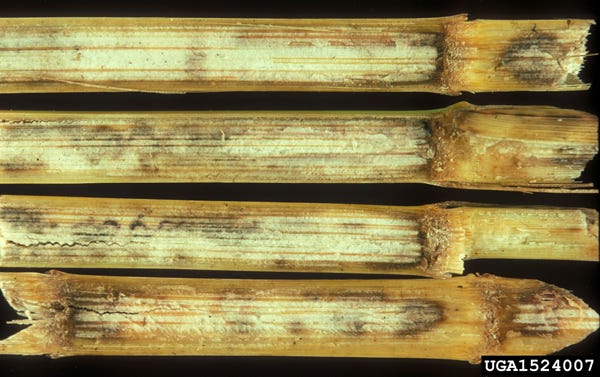
Mares reminds farmers of the importance of tissue sampling in both corn and soybeans. In corn, many farmers have seen excessive nitrogen loss. Mares says it’s important to identify deficiencies before they become apparent to the eye. Often times when a deficiency is visible, it’s too late to be treated.
Looking ahead, Mares encourages farmers to plan for fall weed control. He recommends farmers work with their local agronomist to determine appropriate fall applications after harvest, especially in no-till systems, to set themselves up for success in 2018. Farmers in Mares’ territory have been using the new dicamba products, and he’s observed effective weed control when high volumes of water are used. Mares urges farmers and applicators to consult their local agronomist when working with these products, as following the product labels is key.
Note: Regarding the new dicamba products approved for use with dicamba-tolerant crops, be sure to follow label instructions exactly and work with your local retailer to implement best management practices. You can find more information, including links to product labels, at these websites: XtendiMax With VaporGrip Technology (Monsanto); Engenia herbicide (BASF); and FeXapan herbi
You May Also Like




